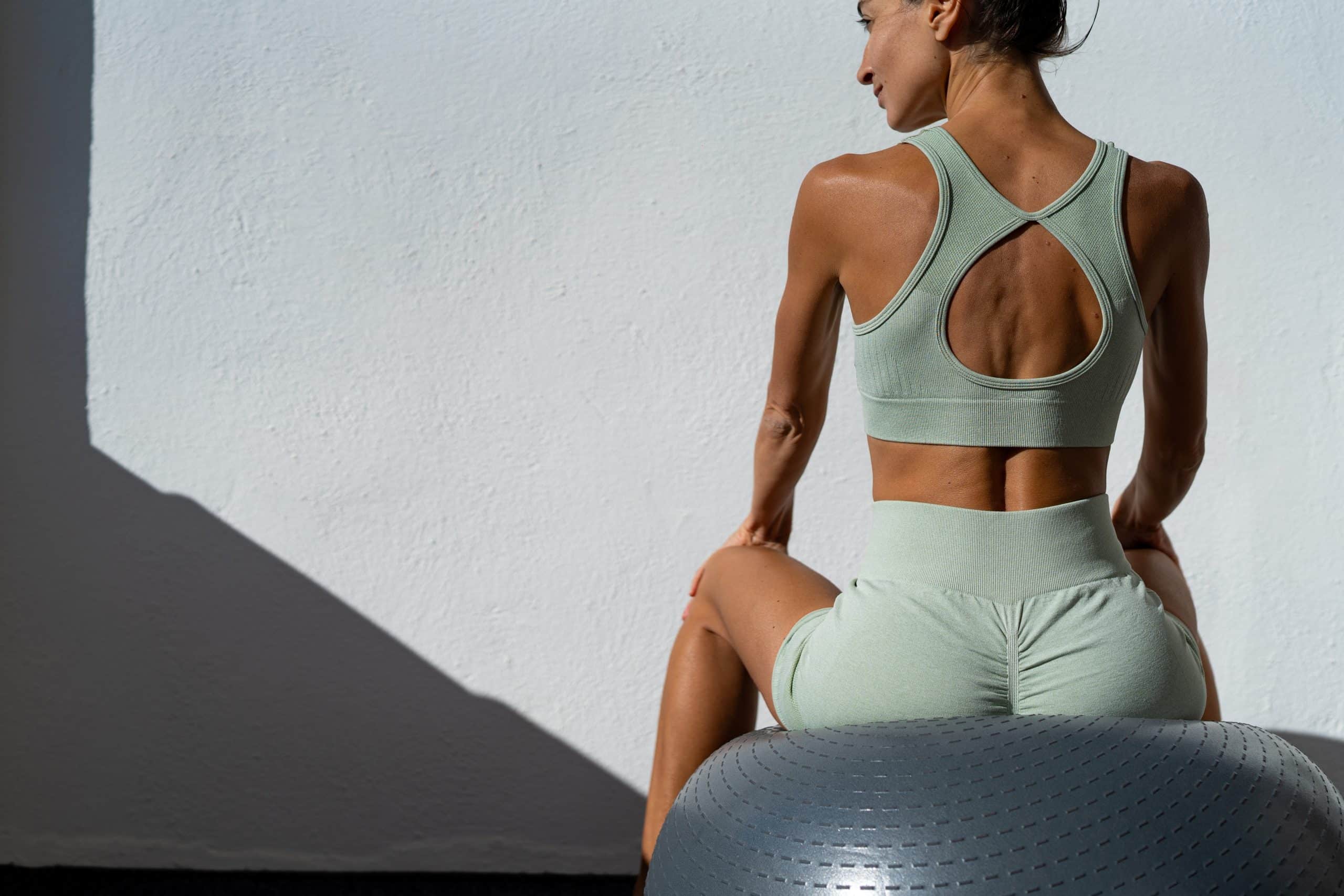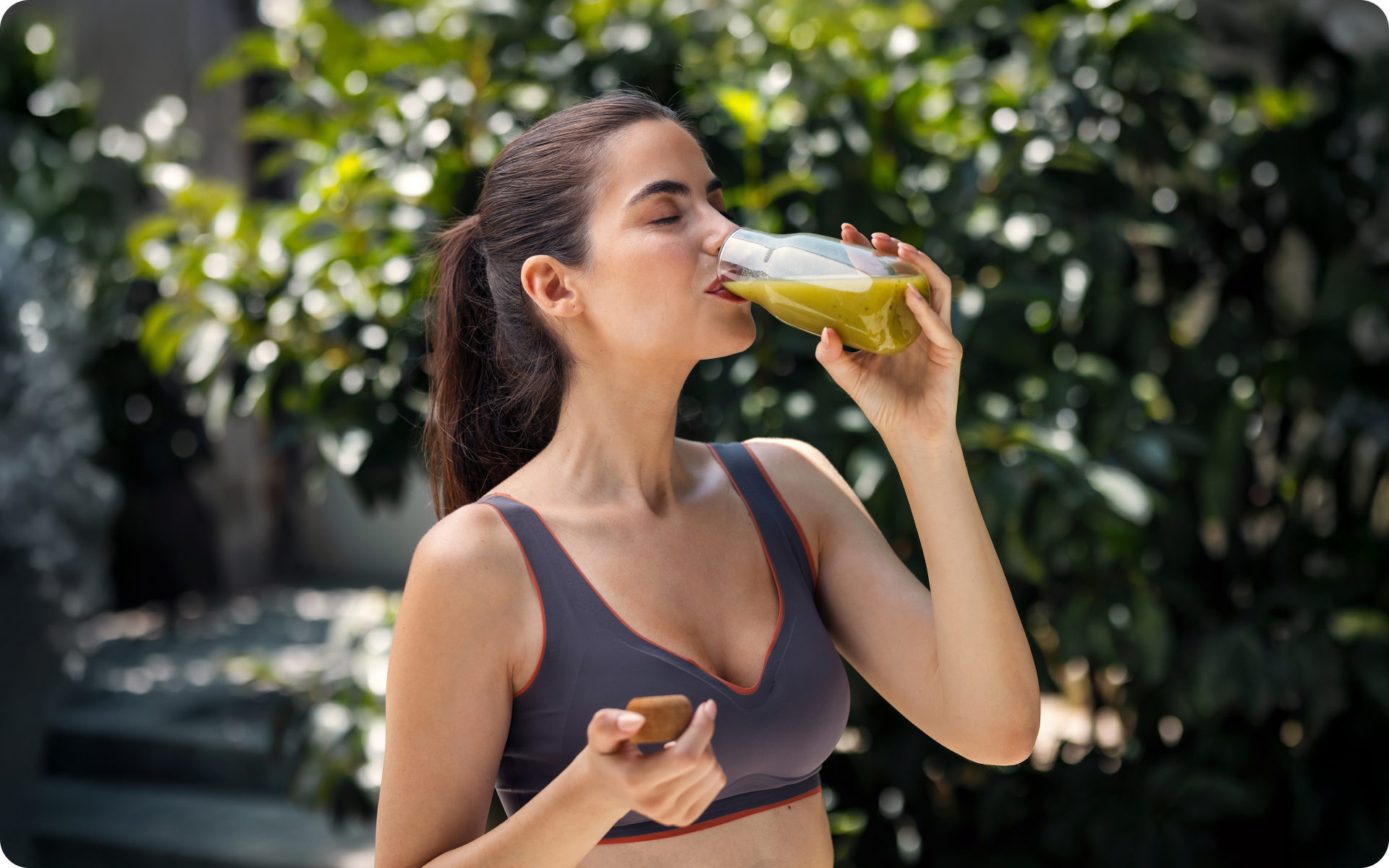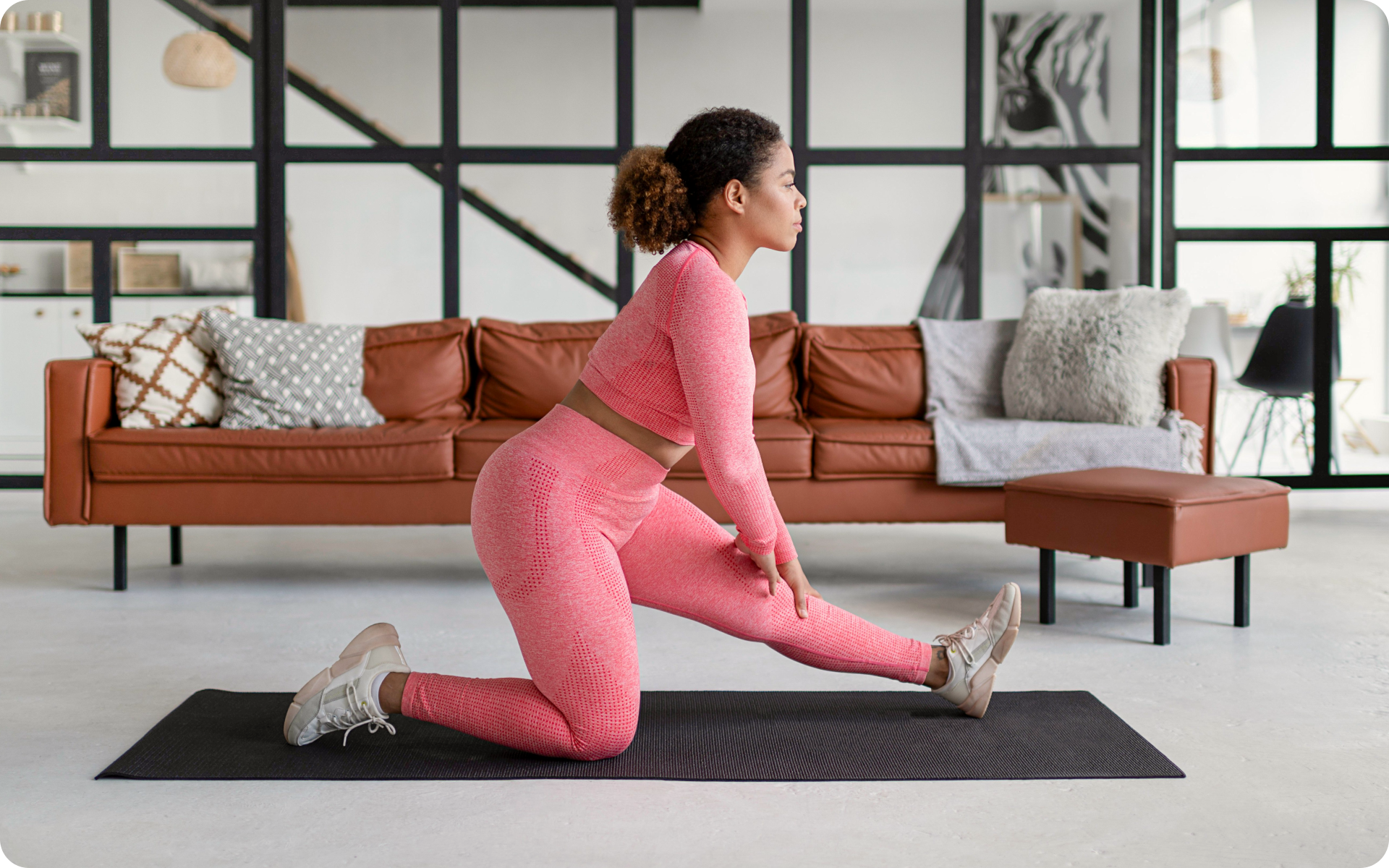For many, body recomposition is an elusive goal; the goal to sculpt the ideal physique by losing fat and gaining muscle simultaneously.
Gaining muscle requires a caloric surplus to fuel muscle growth, but losing fat requires a caloric deficit to encourage the body to burn stored fat for energy. This creates a contradictory situation because these two goals demand opposite nutritional needs.
That said, is achieving significant muscle gain while also reducing body fat percentage an impossible goal? Or, are there effective strategies and methods that can be employed to navigate this balancing act successfully?
Here’s what experts have found: with the right combination of diet, exercise, and lifestyle adjustments, it is indeed possible to achieve both objectives. You really can gain muscle and lose fat, but you should be ready to follow a structured plan.
Can You Lose Fat and Gain Muscle At The Same Time?
It can be possible to lose fat and gain muscle at the same time. However, simply eating a balanced diet and doing some resistance training may not be enough. To successfully achieve both goals, you should have a solid understanding of how your body works and what it needs to make these changes happen.
The best way to gain muscle and lose fat is to prioritize energy balance. This refers to the relationship between the number of calories you consume and the number of calories you burn through daily activities and exercise.
As stated, to lose fat you need to be in a caloric deficit – consuming fewer calories than your body needs for maintenance. This causes your body to tap into stored fat for energy, resulting in fat loss (4).
On the other hand, to gain muscle, you need to be in a caloric surplus – consuming more calories than your body needs for maintenance. This provides the necessary fuel for muscle growth and repair (9).
A 2020 study published in the Strength and Conditioning Journal, found that a moderate caloric deficit, combined with resistance training, can lead to simultaneous fat loss and muscle gain (3).
However, since the study was based on a small group of athletes, the average person may not have the same straightforward results. The rate of progress will be slower when focusing on both goals simultaneously.
If you struggle to even flirt with the idea of giving up your favorite foods or working out till your legs give way – BetterMe app is here to breathe a fresh perspective into the way you view the weight loss process! Check out the app and experience the fun side of fitness and dieting with BetterMe!
What Is The Fastest Way To Lose Fat and Gain Muscle?
The fastest way to lose fat and gain muscle is by focusing on one goal at a time. This approach allows you to direct all your efforts and resources towards that specific goal, resulting in faster progress.
We recommend focusing on muscle gain first, for a few reasons:
- Building muscle requires a caloric surplus. You need to consume more calories than you burn for your muscles to have the necessary resources for growth and repair (9).
- Muscle is metabolically active, meaning more calories are burnt there at rest compared to fat. By gaining muscle, you are increasing your basal metabolic rate (BMR) and burning more calories throughout the day (8).
- As you gain muscle, your body will naturally start to burn more fat, due to the increase in BMR. So, by focusing on muscle gain initially, you can indirectly support fat loss.
Once you have built a solid foundation of muscle mass and strength, you can then switch gears and focus on losing fat, while maintaining that lean muscle mass.
What Should I Eat To Lose Fat and Gain Muscle?
A high protein, calorie-controlled diet is essential for simultaneously losing fat and gaining muscle. You may want to include some form of carb cycling to provide your body with the necessary energy for both goals.
Protein Rich Foods
According to research, consuming 1.6-2.2 grams of protein per kilogram of bodyweight daily is optimal for muscle gain while in a caloric surplus (10).
Protein is also essential for losing fat as it helps to increase satiety, meaning you feel full longer and are less likely to overeat (5).
Foods rich in protein include:
- Lean meats such as chicken, turkey, and beef
- Dairy products and eggs
- Plant-based foods like tofu, beans, lentils, tempeh, and quinoa.
- Seafood and fish, for example, salmon or shrimp
High Fiber Carbs
Go for high fiber carbs to help fill you up and support your goals. Research shows a diet high in fiber is linked with lower body mass and imroved body compositio through reducing body fat and increasing lean mass.
Avoid refined, processed, and sugary carbs and prioritize:
- Whole grains like quinoa or brown rice
- Legumes and beans
- Fruits and vegetables
Healthy Fats
Make sure to include healthy fats in your diet. These are essential for hormone production and overall health. They also contribute to satiety and can help you feel more satisfied after meals (6).
Healthy fat sources include:
- Seeds and nuts
- Avocados
- Olive oil
- Fatty fish, for example, sardines, mackerel, and salmon.
7 Day Meal Plan for Muscle Gain and Fat Loss
Here’s a meal plan for building muscle and losing fat for woman and men:
Day 1
- Breakfast: Greek yogurt, almonds and berries
- Lunch: Grilled chicken and quinoa salad with vegetables and mixed greens
- Dinner: Baked salmon with brown rice and roasted vegetables
Day 2
- Breakfast: Avocado toast with scrambled eggs
- Lunch: Tofu stir-fry with veggies and brown rice
- Dinner: Lean beef stir-fry with broccoli and whole wheat noodles
Day 3
- Breakfast: Oatmeal with almond butter and banana slices
- Lunch: Turkey and cheese sandwich on whole grain bread with a side of fruit
- Dinner: Baked chicken breast with roasted sweet potatoes and green beans
Day 4
- Breakfast: Protein smoothie with banana, spinach, almond milk, and protein powder
- Lunch: Grilled shrimp Caesar salad
- Dinner: Baked pork tenderloin with roasted asparagus and quinoa
Day 5
- Breakfast: Veggie omelet with whole grain toast
- Lunch: Black beans and quinoa bowl with salsa and avocado
- Dinner: Baked halibut with steamed vegetables and wild rice
Read more: The Lying Abdominal Stretch: 15 Abs, Core, and Supporting Muscle Stretches
Day 6
- Breakfast: Greek yogurt parfait with granola and fruit
- Lunch: Hummus wrap with veggies and grilled chicken
- Dinner: Turkey chili with mixed greens salad
Day 7
- Breakfast: Whole grain waffles topped with peanut butter and berries
- Lunch: Grilled salmon with farro and roasted Brussels sprouts
- Dinner: Beef stir-fry with mixed vegetables and cauliflower rice
You can find more details about eating for body recomposition in our previous blog: Muscle-Gaining Meal Plans
How Can I Lose Fat and Build Muscle With Exercise?
A study conducted by the American Council on Exercise, found that combining resistance training with high-intensity interval training (HIIT) can increase muscle mass, while also promoting fat loss (1).
Resistance training can help you gain and keep lean muscle mass (13), while HIIT increases metabolism and promotes fat burning (7). Adding both types of exercise into your workout routine can help you achieve both goals simultaneously.
Examples of resistance training exercises include:
- Squats
- Bench press
- Pull-ups
- Deadlifts
- Bicep curls
For HIIT, try exercises like:
- Sprint intervals on the treadmill or outdoors
- High-knee jump rope
- Burpees
- Mountain climbers.
Here’s a sample 30-day workout plan to lose weight and gain muscle:
N/B – The workout is based on a 3-day split, with one day dedicated to rest and recovery between each training day. As for weight selection, aim for a weight that allows you to keep a proper form while completing the reps.
Day 1: Lower Body
- Squats (3 sets of 12 reps)
- Lunges (3 sets of 12 reps each leg)
- Deadlifts (3 sets of 12 reps)
- Leg press (3 sets of 15 reps)
- Calf raises (3 sets of 20 reps)
Day 2: Upper Body
- Pull-ups (3 sets of 10 reps)
- Bent-over rows (3 sets of 12 reps)
- Bicep curls (3 sets of 15 reps)
- Bench press (3 sets of 12 reps)
- Tricep dips (3 sets of 12 reps)
Day 3: Rest and Recovery
Take a day off from intense workouts to allow your body to recover.
Day 4: Full Body HIIT
- Sprint intervals (10 sets of 30 seconds each)
- Burpees (3 sets of 15 reps)
- Squat jumps (3 sets of 12 reps)
- Mountain climbers (3 sets of 20 reps)
- High-knee jump rope (3 sets of 30 seconds)
Day 5: Lower Body
- Deadlifts (3 sets of 10 reps)
- Leg press (3 sets of 12 reps)
- Step-ups (3 sets of 12 reps each leg)
- Lying hamstring curls (3 sets of 15 reps)
- Calf raises (3 sets of 20 reps)
Whether you’re a workout beast or just a beginner making your first foray into the world of fitness and dieting – BetterMe has a lot to offer to both newbies and experts! Install the app and experience the versatility first-hand!
Day 6: Upper Body
- Shoulder press (3 sets of 12 reps)
- Pull-ups (3 sets of 10 reps)
- Bent-over rows (3 sets of 12 reps)
- Bicep curls (3 sets of 15 reps)
- Tricep dips (3 sets of 12 reps)
Day 7: Rest and Recovery
Take a day off from a round of intense workouts to allow your body to rest and recover.
Repeat this workout plan for four weeks, increasing weight or intensity as needed. Remember to listen to your body and always prioritize proper form.
The best way to gain muscle and lose fat at home, using the same approach, is to invest in a set of dumbbells or resistance bands. You can also use your own bodyweight for resistance exercises like lunges, push-ups and squats.
Our guide on: 7 Exercises to Build Muscle ,has step-by-step instructions and video demonstrations for each exercise recommended.
What Are The Signs of Gaining Muscle and Losing Fat?
The initial sign that you’re gaining muscle and losing fat is that your clothes may fit differently, even if the number on the scale hasn’t changed much. This happens as muscle has a higher density than fat, so despite the same mass, your body gets smaller. Additionally, you may notice that your muscles feel firmer and look more defined.
Changes In Measurements
Another sign to look out for is changes in measurements. While the scale may not budge, you may notice that your waist circumference has decreased and your muscles have increased in size. To track these changes accurately, take measurements of your arms, legs, waist, and hips every few weeks.
Increased Strength and Endurance
As you continue to burn fat and build muscle, you may notice an increase in strength and endurance. This is because muscle requires more energy to maintain, so your body becomes more efficient at burning calories.
Read more: Push Day Workout: Your Blueprint to Powerful Chest, Shoulder, and Tricep Muscles
Lower Body Fat Percentage
One of the most noticeable signs of gaining muscle and losing fat is a decrease in body fat percentage. This can be measured through a variety of methods, such as skinfold calipers, bioelectrical impedance analysis (BIA), or dual-energy X-ray absorptiometry (DEXA) scans (2).
Most of these methods are inaccessible, and tracking body fat percentages can sometimes be inaccurate. However, a simple way to gauge your progress is by taking progress photos every few weeks and comparing them to your starting point.
Improved Wellness
How you feel is just as important as how you look. As you gain muscle and lose fat, you may notice improved wellness in terms of energy levels, mood, and overall health. Regular exercise not only helps to improve physical fitness but also promotes mental well-being.
Improved Overall Health
In addition to physical changes, gaining muscle and losing fat can also have a positive impact on your overall health.
Your immunity may improve, your risk for chronic diseases like diabetes and heart disease may decrease, and your cardiovascular health may improve. This is because regular exercise helps to reduce inflammation in the body and promote proper functioning of various systems (11).
Check out our guide on: How to Start Exercising Again, to discover many reasons why incorporating exercise into your daily routine is crucial for your overall health and wellness.
FAQs
Does Lifting Weights Burn Fat?
Lifting weights builds muscle, and muscle helps to burn fat. When you engage in resistance training, your muscles are challenged, leading to micro-tears that need to be repaired.
As your body repairs these tears, it uses energy (calories) which helps increase your metabolism and promote fat burning.
Having a higher muscle mass also means that your body requires more energy to maintain (8), leading to increased calorie burn throughout the day.
Do You Lose Fat or Muscle First?
If you’re following a healthy and balanced workout plan, your body will prioritize burning fat over muscle. However, if you drastically cut calories or don’t consume enough protein, your body may turn to both fat and muscles as a source of energy.
To prevent this from happening, make sure to eat enough protein and fuel your body with nutritious foods.
What Burns Fat?
Energy expenditure (calorie burn) is the key to burning fat. To lose fat you need to consistently burn more calories than you consume through a combination of exercise and maintaining a calorie deficit (14).
Different forms of exercise can contribute to energy expenditure, including cardio exercises like running or cycling, resistance training with weights, even low-intensity activities like walking or gardening.
Can You Gain Muscle While Cutting?
While cutting, or being in a calorie deficit, it is possible to gain muscle. However, this process will be slower, compared to when you are in a calorie surplus. To support muscle growth while cutting, make sure to consume enough protein and continue with resistance training exercises (12).
What Is The 30-30-30 Rule for Weight Loss?
The 30-30-30 rule is a guideline for weight loss that suggests that you should aim to consume 30% of your calories from protein, 30% from fat, and 40% from carbohydrates. This ratio may work for some individuals, but it’s important to remember that everyone’s nutritional needs are different.
For example, some athletes may require a higher percentage of carbohydrates to support their training, while others may do better with a higher fat intake.
The Bottom Line
Losing fat and gaining muscle is a common goal for many people, and it can be achieved through a combination of resistance training, HIIT, and proper nutrition. By following a structured workout plan and monitoring your progress through measurements and how you feel, you can successfully reach your goals in a healthy and sustainable way.
DISCLAIMER:
This article is intended for general informational purposes only and does not serve to address individual circumstances. It is not a substitute for professional advice or help and should not be relied on for making any kind of decision-making. Any action taken as a direct or indirect result of the information in this article is entirely at your own risk and is your sole responsibility.
BetterMe, its content staff, and its medical advisors accept no responsibility for inaccuracies, errors, misstatements, inconsistencies, or omissions and specifically disclaim any liability, loss or risk, personal, professional or otherwise, which may be incurred as a consequence, directly or indirectly, of the use and/or application of any content.
You should always seek the advice of your physician or other qualified health provider with any questions you may have regarding a medical condition or your specific situation. Never disregard professional medical advice or delay seeking it because of BetterMe content. If you suspect or think you may have a medical emergency, call your doctor.
SOURCES
- ACE-SPONSORED RESEARCH: Is HIIT Resistance Exercise Superior to Traditional Resistance Training? (2018, acefitness.org)
- Body Composition Methods: Comparisons and Interpretation (2008, ncbi.nlm.nih.gov)
- Body Recomposition: Can Trained Individuals Build Muscle and Lose Fat at the Same Time? (2020, journals.lww.com)
- Caloric Deficit: What to Know (2023, webmd.com)
- Clinical Evidence and Mechanisms of High-Protein Diet-Induced Weight Loss (2020, ncbi.nlm.nih.gov)
- Fats and Satiety – Fat Detection (2010, ncbi.nlm.nih.gov)
- High-Intensity Intermittent Exercise and Fat Loss (2011, ncbi.nlm.nih.gov)
- Increasing muscle mass to improve metabolism (2013, ncbi.nlm.nih.gov)
- Is an Energy Surplus Required to Maximize Skeletal Muscle Hypertrophy Associated With Resistance Training (2019, .frontiersin.org)
- Nutrition Recommendations for Bodybuilders in the Off-Season: A Narrative Review (2019, ncbi.nlm.nih.gov)
- Physical activity, exercise, and chronic diseases: A brief review (2019, sciencedirect.com)
- Recent Perspectives Regarding the Role of Dietary Protein for the Promotion of Muscle Hypertrophy with Resistance Exercise Training (2018, ncbi.nlm.nih.gov)
- Resistance training – health benefits (2022, betterhealth.vic.gov.au)
- The association between different types of exercise and energy expenditure in young nonoverweight and overweight adults (2014, ncbi.nlm.nih.gov)










